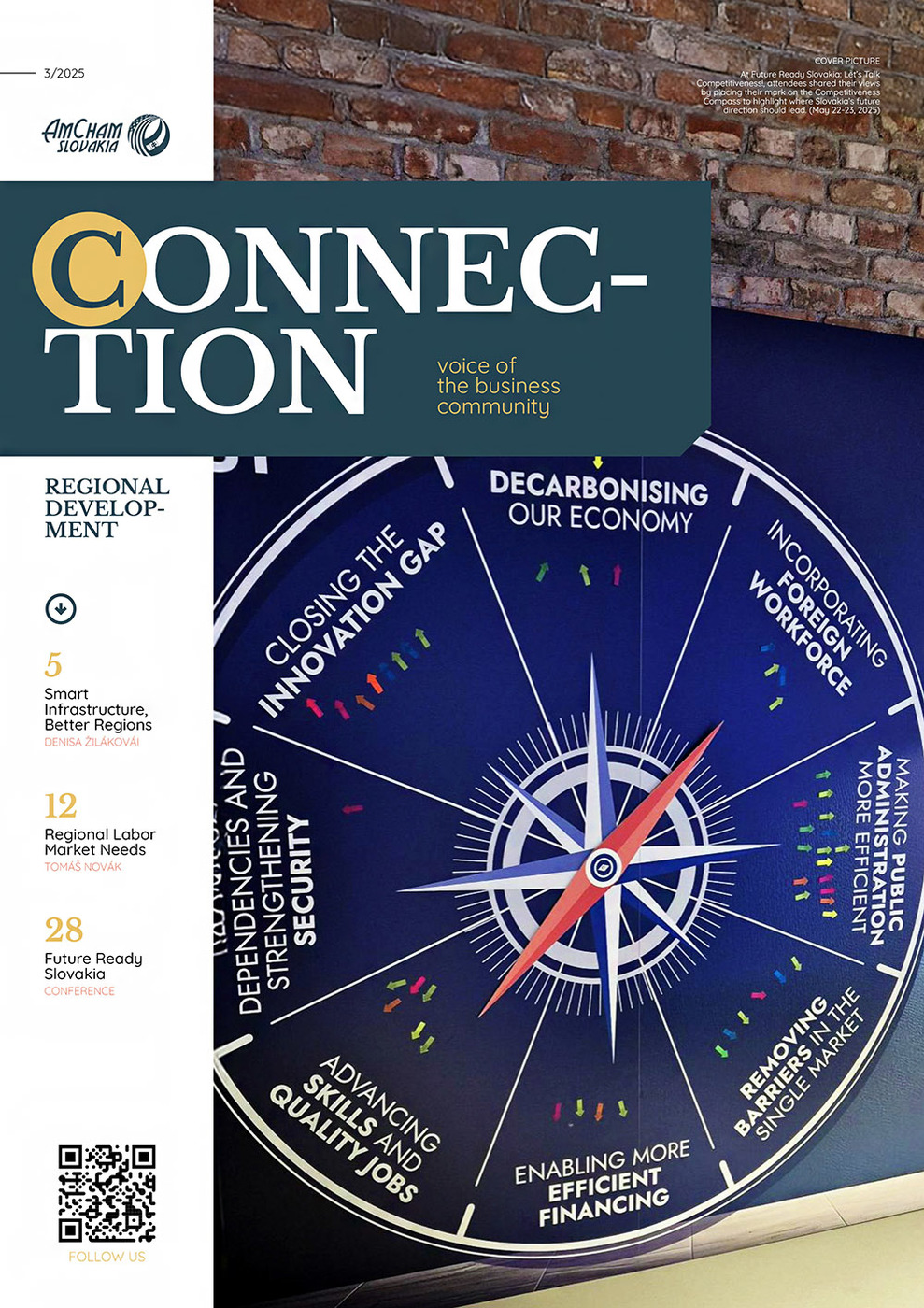
Download PDF
- Smart Infrastructure, Better Regions
- Regional Branding Explained
- Revitalizing Eastern Slovakia’s Workforce
- Bridging Regional Labor Gaps
- Regional Labor Market Needs
- Skilled Workforce Needed
- Regions Thrive When People Do
- Thriving Space Sector
- Macroeconomic Outlook
- AI: The Catalyst for Change
- Work and Life Connections
- Three Decades of Innovation at Dôvera
- Bridging Gaps: Talent, Transport, and Technology
Regional Development
Smart Infrastructure, Better Regions
The quality of life of the residents of Slovakia’s regions is being
shaped largely within these regions. This is where everyday needs meet
long-term visions. One of the most powerful tools for shaping this
future is a high-quality transport infrastructure. The Ministry of
Transport of the Slovak Republic fully recognizes this and has long been
working to ensure that transportation is not only functional and safe
but also fairly accessible to all regions without exception. Our
commitment to modernizing transport in Slovakia is clearly reflected in
the fact that the Ministry is among the national leaders in utilizing
European Union funds—across all key areas such as fund absorption,
contracting, and issuing calls for proposals.
Regional Branding Explained
Regional branding is often mistaken for a matter of design: slogans, logos, visuals. But a region’s true identity is experienced, not crafted. Branding success depends on aligning perception with reality and building trust through consistent, reputation-led communication across tourism, business, and public life.
Revitalizing Eastern Slovakia’s Workforce
Slovakia’s unemployment rate reached historic lows in 2024. Despite this, two-thirds of the unemployed resided in the regions of Banská Bystrica, Košice, and Prešov. The ongoing shortage of labor highlights the critical role of foreign workers and the EU’s Pay Transparency Directive to support regional economic development.
Bridging Regional Labor Gaps
While western Slovakia faces a labor shortage, the east of the country holds untapped potential. In the region with the highest unemployment rate, an abundance of job seekers, low workforce mobility, and a lack of attractive job opportunities converge. How can Generation Z and targeted collaboration between companies and the state change this equation?
Regional Labor Market Needs
The labor market in each region of Slovakia has unique characteristics determined by its history, current opportunities, and future potential. However, particular fundamental labor market needs remain consistent across all regions despite their specific differences. Let us now examine some of these common needs.
Skilled Workforce Needed
Despite record-low national unemployment, regions like Košice, Prešov, and Banská Bystrica face major structural labor gaps. A wave of investment is exposing skill shortages, especially in IT, engineering, and services. It places pressure on regional governments, businesses, and education systems to adapt quickly.
Regions Thrive When People Do
The quality and availability of the workforce play a crucial role in the development of every region. Human resources – the abilities, knowledge, and skills of people – form the foundation for innovation, competitiveness and the growth of the regional economy.
Thriving Space Sector
Eastern Slovakia is entering a new era of innovation-led transformation—driven by science, inspired by youth, and rooted in a long-standing tradition of research excellence. With over five decades of experience in space research, Košice and its institutions have contributed to missions such as Rosetta, BepiColombo, and JUICE, building a strong foundation in areas like cosmic ray physics, plasma research, and satellite data analysis.
Macroeconomic Outlook
As part of the “Future Ready Slovakia: Let’s Talk Competitiveness” conference, we created a special brochure highlighting funding opportunities and expert insights to help Slovak businesses access capital for growth. It also includes this valuable in-depth analysis of the Slovak economy and its future outlook.
AI: The Catalyst for Change
Artificial intelligence is no longer just a futuristic vision but a reality that is transforming the way organizations and global markets operate. In today’s dynamic business environment, AI has become a key tool for optimizing costs, improving efficiency, and innovating business models. Understanding AI correctly is essential for any company that wants to remain competitive in the 21st century.
Work and Life Connections
Achieving professional success often involves navigating many challenges.The responsibility towards their families and their employees makes business leaders carefully consider each minute of their day. We want to know how they like to spend their time out of work, what inspires them and motivates them.
Three Decades of Innovation at Dôvera
Martin Kultan, CEO of Dôvera, reflects on three decades of the health insurer’s presence on the Slovak market and the role its innovations play in improving patient care.
Bridging Gaps: Talent, Transport, and Technology
A central element of AmCham Slovakia’s regional strategy is the presence
of our Košice office, which plays a crucial role in representing and
advocating for our members across Eastern Slovakia. This regional
presence allows us to actively shape development initiatives and
effectively communicate regional needs at the national level.

Follow us